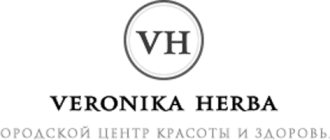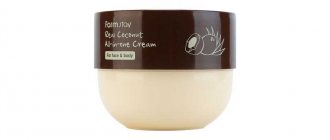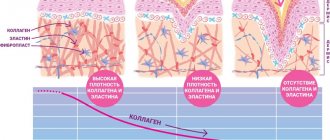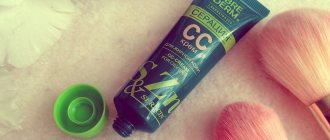Criteria for choosing a moisturizer
The main selection criteria are:
- Light texture
- Water based formula
- Non-comedogenic
This is not quite the right approach! Firstly, skin reaction is strictly individual , and the same cream can suit one person and provoke inflammation in another.
Secondly, the choice must be made not according to the density of the cream, but based on the composition of its base .
The selection of moisturizer depends primarily on your skin type.
- With dry and normal skin types , as a rule, you should not be afraid of comedogenicity - narrow pores and a lack of sebum will not allow comedones and acne to form.
- Oily/oily-prone skin - enlarged pores and increased sebum production - a moisturizer must be selected by reading the composition of the product!
Comedogenic substances in cosmetics
For those whose skin is acne-prone, the word “comedogenic” is not an empty phrase. You have to choose your care very carefully in the eternal fear of getting the hated white bumps.
WHAT IS COMEDOGENICITY?
Comedogenicity is considered to be the ability of a number of components to clog pores and form closed comedones, from which inflammation often subsequently develops. Products with comedogenic ingredients can clog pores and destroy your painstakingly built daily care routine. And then everything all over again: lumpy skin texture, inflammation, post-acne spots... Those who are faced with such a problem feverishly check the components of the cream on the comedogenicity scale and rush to throw it in the trash when they see the terrible mineral oil in the composition. But is it worth demonizing certain ingredients when the cosmetics industry has come so far forward?
DO YOU NEED TO CHECK CREAM FOR COMEDOGENICITY OR IS EVERYTHING INDIVIDUAL FOR EVERYONE?
I’ll say right away: it is necessary, but not possible, to interpret the comedogenicity table unambiguously and manically avoid using substances from the list. Proportions are always important. It is generally accepted that comedogenic components include petroleum products and some base oils due to their consistency. However, this is not quite true.
WHEN ARE COMPONENTS NEEDED?
A) If Vaseline (paraffin liquidum, paraffin oil, liquidum petrolatum) is in second place in the cream, then most likely it will clog your pores! However, comedogenic substances definitely have the right to exist in the composition of the cream as occlusives. Occlusive agents, forming a semi-impermeable film on the surface of the skin, slow down the evaporation of moisture and prevent the face from drying out. That is why occlusives are necessary in nourishing creams, which are very relevant in winter during the heating season.
B) With base oils, which are also usually avoided due to the possibility of getting clogged pores, things are also not so simple. Recent studies have shown that the sebum secreted by skin prone to inflammation contains extremely low amounts of linoleic acid and high levels of oleic acid.
Linoleic acid prevents acne and makes sebum less viscous, thus reducing the risk of clogged pores. Oleic, on the contrary, thickens sebum and increases the chance of getting closed comedones from using the cream.
Therefore, oils with a predominance of linoleic acid in their composition are your friends!
WHAT TO LOOK FOR AND AVOID IN THE COMPOSITION?
In a cream that most likely will not clog pores, you should look for the following oils:
- Safflower oil (Carthamus Tinctorius, Safflower Seed Oil)
- Evening Primrose Oil (Oenothera Biennis, Evening Primrose Oil)
- Grapeseed Oil (Vitis Vinifera, Grapeseed Oil)
- Sunflower oil (Helianthus Annuus, Sunflower Oil)
- Pumpkin Seed Oil (Cucucrbita Pepo)
- Black cumin oil (Nigella Sativa, Black Seed Oil)
- Hemp oil (Cannabis Sativa, Hemp Seed Oil)
- Argan oil (Argania Spinosa, Argan Oil)
- Rosehip oil (Rosa Canina, Rosa Mosqueta, Rosehip Oil)
There is a risk that oleic acid will clog the pores of those with oily, combination skin. Forewarned is forearmed! Catch a list of oils with a predominance of oleic acid in the composition:
- Olive oil (Olea Europaea, Olive Oil)
- Coconut oil (Cocos Nucifera, Coconut Oil)
- Flaxseed Oil (Linum Usitatissimum, Linseed Oil, Flaxseed Oil)
- Apricot kernel oil (Prunus Armeniaca, Apricot Kernel Oil)
- Avocado oil (Persea Gratissima, Avocado Fruit Oil)
All these oils pose a threat only to those with oily and combination skin types. The rest need not be afraid!
Important: Do not confuse comedogenicity with poor quality cleansing. Before attributing all mortal sins to any cream and accusing it of crimes against humanity, you must first make sure whether you cleanse your skin well enough of sebum, dust and residues of decorative products. It is likely that the problem will be resolved if this condition is met. Maybe it's time to add hydrophilic oil?
WHICH NUTRITIONAL CREAM TO CHOOSE?
Nourishing creams are considered potentially comedogenic, but, as we have already discussed, this is not bad, but quite normal for them. And you shouldn’t avoid them, especially in winter, when they are needed our Face and Neck Cream with Mango Butter
Face and neck cream with mango butter
Baviphat Urban Dollkiss Tongkeun Mango Butter Cream
Despite the fact that the nourishing face and neck cream from Baviphat contains mango butter, which is dominated by oleic acid, it can be safely used by those with dry and mature skin and not be afraid of clogged pores.
Horse oil cream
Secret Key MAYU Healing Facial Cream
Ultra-nourishing horse oil, on the basis of which the cream is developed, softens rough skin and eliminates signs of dehydration in the form of tightness, peeling, itching and microcracks.
Cream with rosehip oil
The Skin House Rose Heaven Cream
Cream with rosehip oil makes the skin smooth and nourished, restores its protective functions and provides powerful antioxidant protection. Gives radiance and improves complexion.
Winter cream for chapped skin
Elizavecca Silky Creamy Donkey Steam Moisture Milky
This rich winter protection cream protects skin from stressors such as sudden temperature changes, frosty winds, and ultraviolet rays reflected from snow. The cream restores the hydrolipid mantle and prevents skin drying.
Nourishing pomegranate cream
Frudia Pomegranate Nutri-Moisturizing Cream
If you see pomegranate in the composition, know: this product is definitely nutritious! Pomegranate cream restores and strengthens damaged skin, improves its tone, and smoothes out surface wrinkles caused by dryness.
How to choose the right moisturizer
Before purchasing a cream, it would be a good idea to consult with a specialist - a cosmetologist or a consultant of the brand you have chosen.
The next best thing to do is to read reviews online.
If your level of proficiency in cosmetology is higher, then look at the composition! And choose products that do not contain potentially comedogenic ingredients .
- Butyl stearate
- Wheat germ glyceride
- Glyceryl stearate SE
- Decyl oleate
- Isopropyl compounds (Isopropyl isostearate, Isopropyl myristate, Isopropyl palmitate, Isostearyl neopentanoate)
- Coconut oil (Coconut butter,Cocoa butter)
- Lanolin, Acetylated lanolin, Acetylated lanolin alcohol
- Laureth-4
- Laureth-23
- Lauric acid
- Mink oil
- Shark liver oil
- Myristyl compounds (Myristyl myristate, Myristic acid, Myristyl lactate)
- Oleth-3
- Soybean oil
- Stearyl heptanoate
- Stearic acid
IMPORTANT! Pay maximum attention to cleansing your skin - the formation of comedones is usually associated not with comedogenic cosmetics, but with poor-quality or irregular skin cleansing.
Do not refuse to use moisturizing and nourishing creams for oily/problem skin, because such skin is often dehydrated/overdried and requires restoration of barrier function.
Selecting facial oil
The composition of different products is approximately the same; the basis is fatty acids. These substances restore the lipid layer, prevent dehydration, and nourish the epidermis. The base oil formula additionally contains vitamins that perform an important biological function. As a rule, such products are rich in antioxidants - vitamins A and E. They provide protection against free radicals and prolong youth.
When choosing a product for daily care, you need to be guided by three parameters:
- comedogenicity;
- density;
- benefit.
Comedogenicity is a parameter that determines the ability to clog pores. It is because of the comedogenicity of some oils that owners of oily skin types often avoid them in cosmetics.
Density is the texture of a cosmetic product. Some oils are absorbed instantly, others leave a thick, noticeable film. Dense batters are more nutritious, retain moisture better, and are great for eliminating peeling or the effects of chapping. They should be chosen by those with dry, aging skin. Light consistencies are suitable for the warm season; they can be used for problem and oily skin types.
A common mistake is to think that the thicker the oil, the more it clogs pores, but the two are not related. An example is shea butter. Despite its thick consistency, it is quickly absorbed and does not provoke comedones.
Cosmetic properties depend on the composition and purpose of use. Oily skin needs nutrition to a lesser extent than hydration, while dry skin needs the opposite. To unlock the potential of a product, you need to use it correctly.
Based on their properties and density, there are 3 types of oils.
- Butter is a solid butter that melts at temperatures above 25 degrees. Used for nutrition and restoration, does not penetrate deep into the dermis, works at the level of the epidermis. This group includes coconut, shea, cocoa.
- Base oil – regenerates, protects the skin, softens. Used in sunscreens. This group includes few grape seeds, avocados, and almonds. Can be used pure or combined with other products.
- Active oil – added to enrich the compositions of cosmetics, used in combination with other products. Contains a large percentage of active substances; it is not allowed to be used in its pure form. An example is cranberry oil.
The degree of comedogenicity, density and properties of the oil can be changed if you combine it with other similar products. A combination of different oils is a product with different properties aimed at solving different problems. So, to care for oily but aging skin, a combination of light non-comedogenic oil (shea, safflower) with a heavier anti-aging agent (flax, almond) is used. Moreover, you can select the proportions yourself, depending on the needs of the skin.
Why are enlarged pores dangerous?
The most common cosmetic imperfections are:
- Increased sebum secretion of the skin;
- Bacterial growth;
- Provoking inflammatory processes;
- Oily sheen;
- Rashes;
- The appearance of blackheads;
- Unhealthy color;
- Uneven tone.
With regular high-quality care using cosmetics to narrow the pores on the face, it will be healthy, fresh, with an even tone.
Rating of the best products for narrowing pores
| Nomination | place | Name of product | price |
| The best masks for tightening pores | 1 | TONY MOLY Egg pore mask | 770 ₽ |
| 2 | EUNYUL Pore Tightening Radiance Pack | 1 190 ₽ | |
| 3 | Pore Designing Minimizing Mask | 1 180 ₽ | |
| The best creams to tighten pores | 1 | Pevonia Power Repair Bioactive | 7 320 ₽ |
| 2 | Stone Peach Pore Less Holding Cream. Cream with peach extract | 1 122 ₽ | |
| 3 | Bioderma Sebium Pore Refiner | 1 501 ₽ | |
| The best serums to tighten pores | 1 | Holika Holika Skin & Pore Zero Tightening Serum | 1 590 ₽ |
| 2 | Ciracle Pore Control Tightening Serum | 1 090 ₽ | |
| 3 | Mizon Black clean up pore tightening serum | 1 360 ₽ | |
| The best liquid products to tighten pores | 1 | La Roche-Posay Effaclar | 1 176 ₽ |
| 2 | Vichy Normaderm | 866 ₽ | |
| 3 | The Saem Calamansi Pore Freshner Toner with calamansi extract | 850 ₽ |











